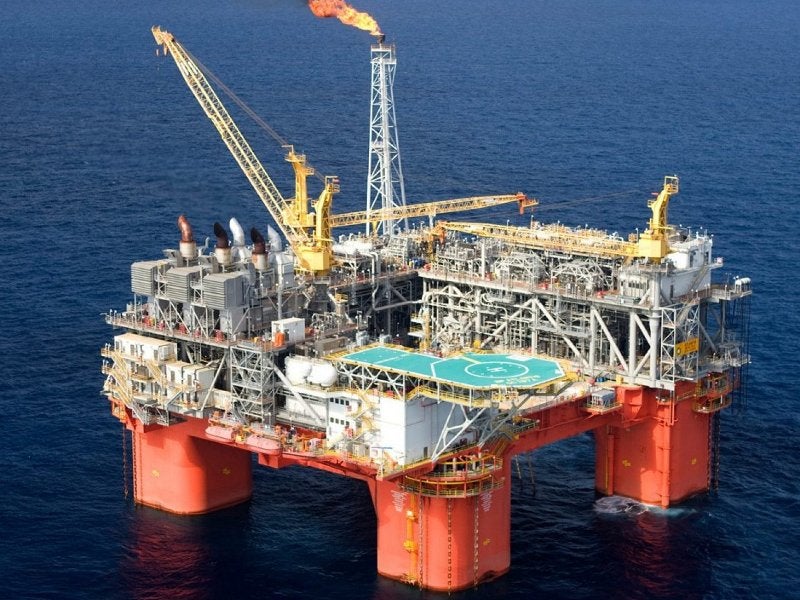The Atlantis phase three expansion will increase the production capacity of the Atlantis deepwater oil and gas field by 38,000 barrels of oil equivalent a day (boed). Operated by BP, Atlantis is one of the biggest production fields in the Gulf of Mexico, US.
The offshore oil and gas field is located 130 miles away from the coast of Louisiana and has been in production since 2007. BP owns 56% interest in the field, while the remaining 44% is held by BHP Billiton.
Recoverable oil and gas resources at the Atlantis field were originally estimated to be 635 million barrels of oil equivalent (Mboe). The field is currently capable of producing 200,000 barrels of oil a day (bopd) and 180 million cubic feet (Mcf) of gas a day.
The on-going phase three expansion is based on a 400Mboe discovery at the field, which is estimated to cost $1.3bn to develop. The final investment decision (FID) on the expansion was announced by BP in January 2019, which led to the award of the engineering, procurement, construction and installation (EPCI) contract in the same month.
First oil from the Atlantis phase three expansion project is expected in 2020.
Atlantis field discovery and infrastructure details
Atlantis oilfield was discovered in 2,134m-deep waters in the Green Canyon area of the US Gulf of Mexico in 1998.
The oil field was developed with 16 production wells tied back to the Atlantis production and quarters (PQ) platform via four production manifolds.
The semi-submersible Atlantis PQ facility, with a 14,125t topside, is permanently moored at a water depth of 7,000ft and has three production/utility modules. It was the world’s deepest moored semi-submersible oil and gas production platform at the time of its commissioning in 2007.
A 123m-long and 76m-wide hull at the PQ facility has a displacement of 88,826t.
Atlantis PQ platform features a 63MW power generation facility and is supported by two mobile offshore drilling units (MODUs).
The subsea system of the field was reconstructed as part of a major refurbishment programme carried out between 2011 and 2012.
The oil and gas produced from the field is transported to the US through the Caesar oil pipeline and the Cleopatra natural gas pipeline, which form part of the Mardi Gas Transportation system that is co-owned by BP Midstream Partners (65%) and BP Pipeline (35%).
Atlantis phase three subsea development details
The new subsea production system for the Atlantis phase three expansion comprises the drilling of eight production wells in the eastern portion of the Atlantis field and tying them back to the existing Atlantis production platform.
BP and BHP Billiton are also planning to expand the Atlantis field in two more phases after the completion of the on-going expansion project.
Contractors involved in Atlantis phase three expansion
TechnipFMC received the engineering, procurement, construction and installation (EPCI) contract for the Atlantis phase three expansion project in January 2019.
TechnipFMC will manufacture, design and install the subsea systems, including subsea trees, manifolds, flowline, umbilicals, subsea tree jumpers, pipeline end terminals and subsea distribution systems, along with topside control equipment.
Contractors involved in the Atlantis field development
Ray McDermott constructed the topside of the Atlantis PQ facility in Louisiana, US, while Daewoo Shipbuilding and Marine Engineering (DSME) built the hull in South Korea. KBR completed the integration of the topside and hull in 2005.
KBR’s subsidiary GVA Consultants provided the design for the Atlantis semi-submersible PQ platform.
Mustang Engineering was in charge of the structural designs and EPCI works for the Atlantis field development.
FMC Technology, Nexan Norway and Subsea 7 were the main subsea contractors for the Atlantis oil field development.
Honeywell, Bayou Companies, Stress Engineering, Acute Technical, Omega Natchiq, Cameron Flow Control, Duffy and McGovern, and Heerema Marine Contractors were the other contractors involved in the project.
EMAS AMC executed the subsea system refurbishment of the Atlantis oil field from 2011 to 2012.





